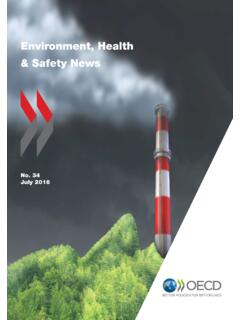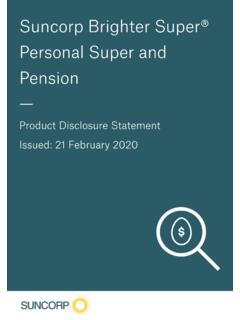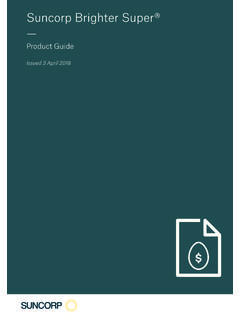Transcription of Place and Liveability - AGTA
1 Place and LiveabilityPresented by Lorraine Chaffer- Vice president GTANSW -Textbook author -Geographical education consultantFor AGTA Conference New Zealand, 2015In Lima, Peru, a water park attracts children and adults improving social connectedness and people s quality of life Acollection of ideas Strategies to engage students in examining the Liveability of places at a variety of scales Factors influencing the Liveability of places the selection is huge Influences on perceptions of Liveability Strategies to enhance Liveability link to the factors you choose Ideas for incorporating skills, inquiry, fieldwork and ICTIt would be impossible to teach all of the ideas presented here each slide could be the focus of several lessons and you only have 25 hours. You have choices to make choose to engage / choose for funUse texts as a source of ideas there are fantastic resources out thereLiveability anew nothing new at all Liveability defined in the Australian Curriculum Liveability - anassessment of what a placeis like to live in, using particular criteria,for example, environmental quality, crime and safety, education and health provision, access to shops and services, recreational facilities and cultural activities (AC Glossary ).
2 Liveability is a human construct and it is not new. When we make judgements about places I couldn t live in this street , I wouldn t mind living in this suburb or I wish there was a coffee shop close by - we are assessing / evaluating Liveability we have just never called it that beforeLiveability, sustainability, walkability, quality of life , human well being and many other concepts have become the new language of planning betterplaces to live. Content Descriptions The factors that influence the decisions people make about where to live and their perceptions of the Liveability of places The influence of accessibility to services and facilities on the Liveability of places The influence of environmental quality on the Liveability of places The influence of social connectedness, community identity and perceptions of crime and safetyon the Liveability of places The strategies used to enhance the Liveability of places, especially for young people, including examples from Australia and Europe.
3 Geographical concepts Place space environment interconnection sustainability Scale are the key ideas -integral to the development of geographical understanding and used to teach students to think geographicallyIntegrate into the content you chooseCross curriculum priorities Sustainability Aboriginal and Torres Strait Islander histories and cultures Asia and Australia s engagement with AsiaGeographical inquiry / skillsThe aim of inquiry skills is to deepen geographical understanding. It involves individual or group investigations. The geographical skills are the techniques geographers use in their investigations in the classroom and in fieldwork. Inquiry incorporates the tools / resources/ sources of information used by geographers to investigate people, places, environments and issues. Representation of the inquiry process from Macmillan GeoWorld 7 Page 44 Geographical inquiry is not a set of compulsory steps but an interconnected framework students will develop skills for each component or may complete an entire inquiry using all componentsFieldwork is mandatory The Challenges Choosing content just about anything can be a factor influencing perceptions of Liveability Integrating key concepts and cross curriculum priorities within the examples we choose make them integral Using Geographical Inquiry particularly fieldwork Programming to avoid repetition of content with topics in 7 10 water, landscapes, urban places, biomes, global connections, environmental change and wellbeing Engaging 12-13 year olds use ICT and visual representations (maps, diagrams, photographs, infographics)
4 Introductory What don t you want the Place you live in to be like ? turn this into a list of factors that influencing Liveability All places are liveable to some degree. Why do people live in places with low Liveability characteristics? Use examples eg extreme climates, Place prone to hazards, war zones, slums Rather than begin with a definition of Liveability and a discussion of factors influencing where people live .. Brainstorm the things students do not wantin the places they live eg noise, pollution, lots of traffic, crime, danger, drug dealers, emptiness, isolation, extreme heat or cold. Answers will depend on students location and experiences. But people do live in places with these characteristics Why? Examples -integrating geographical tools and skills eg. maps, graphs, can lead to a discussion of the features they want in the places they live and the development of personal Liveability criteria.
5 This can lead to a discussion of the features they want in the places they Features not wanted Factorsinfluencing Liveability Dangerous, violence, crime, natural hazards, war, drugs Safety from natural and human dangers eg natural hazards, war,crime, exploitation Pollution,noise, old or run down buildings, Environmental quality Too hot, very cold, deserts/ lackof waterEnvironmental quality Isolation / too far away / no Internet/no TV / no phone connection / Connectedness to services and facilitiesslumsEnvironmental quality, services and facilitiesNo places to meet,play or socialiseNo recreational facilities, parks, cinemasSocial connectedness, services and facilitiesEnglishnot spoken, racist attitudes, Culturalidentity, Referto examples Why people do live in these places What trends are apparent How are these places made more liveable People live in dangerous and extreme zones, near volcanoes & nuclear power gypsiesArid & cold climatesEthiopian highlandsJapan, FukushimaAfghanistanIndonesiaPacific & Indian Oceans( Sea gypsies)Location factors Cultural sea gypsies Environmental resources Economic - poverty, #/?
6 Picture=372735447&index=16 #.UFMl2I5zr0 : Living in Indonesia s volcanic #p=1&q=volcanoes+ #p=1&q=volcanoes+indonesiaCurriculum links Thefactors that influence the decisions people make about where to live and their perceptions of the Liveability of places Influence of environmental quality danger vs. resources (economic) Influence of community identity & social connectedness religious beliefs, family traditions and perceptions of safety Ash clouds, mudflows, poisonous gases, lava flows and tsunamis threaten lives, and livelihoods in Indonesia every year yet millions continue to live under volcanoesPoverty restricts people s ability to move(economic factor) NUNAVUT home of the Inuit who have occupied the arctic for over a thousand years living on environmental resources and developing a unique culture based on seasonal cycles of the land and sea.
7 Links Thefactors that influence the decisions people make about where to live and their perceptions of the Liveability of places Influence of environmental quality- resources, climate change Influence of accessibility to services and facilities Influence of social connectedness & cultural identity Thestrategies used to enhance the Liveability of places, especially for young peopleExample: Living in polar climatesLiveability changesover time young people are leavingTechnology can overcome remoteness & improve social connectedness ( economic, environmental social& cultural factors impact on Liveability ) 2. Photo interpretation / ranking activity Use a variety of images and have students rank them according to their perceptions of Liveability orwhere they would like to live from most to least. ( Local streets, Australian towns, overseas places) Discuss / list the criteria they used to determine their rankings / compare perspectives of different students What features cannot be shown in an image that may be an important influence on Liveability ?
8 (Tangible & intangible characteristics / quantitative & qualitative data) At the end of the discussion students ( individually or in groups) can be asked to develop a set of Liveability criteria to apply to a local Place ( Choice of places to assess will depend on localsensitivities) Curriculum links Thefactors that influence the decisions people make about where to live and their perceptions of the Liveability of places Influence of environmental quality Influence of community identity & social connectedness The strategiesused to enhance the Liveability of placesGreat places to liveChallenge thinking explain quotes The quality of our neighbourhoods, towns and cities have a significant impact on our daily lived experience conceptsAssess Liveability - which attributes in the diagram could apply to the placeswhere students live ?
9 Propose strategies -choose one missing attribute and propose change that would improve this aspect of criteria developed by students should contain qualitative / quantitative / tangible and intangible attributes such as shown in this illustration** Simplify diagram for lower ability students / create one with local relevance of a Place : Assess liveabilityThere were more street lights lights and footpaths Between the shops and the new estate Feel safer and more comfortable walking from home to shops and back. Safe, walkable, healthier SCALEW orldCountryStateRegionCityTo w nSuburbNeighbourhoodStreetWhat criteria were used? safety, access to services & facilities, environment,lifestyle, culture, community, family, should demonstrate a variety of social cultural, environmental and economic factors impacting on or influencing simple activity easy to adapt to classroom use to develop students ability to evaluate the Liveability of their own placeand to investigate whether it can be improved through planning response: The kind of Place I aspire to live in Open question or hypothetical scenario: choose a location and justify choiceOpen question : If you could live anywhere in the world, where would you like to live?
10 Why? Give options or a hypothetical situation: Provide selected information about 2 places for students to choose between maps (location), climate graphs, employment statistics, travel, recreational facilities, access to services and facilities, transport connections. Include things relevant to 12-13 year olds. These activities can help students reflect on the features / factors they consider important for can lead to the development of a set of Liveability criteria to apply to other places. Liveability what s out there? of liveabilityA variety of factors will influence our perceptions of the Liveability of places age, income, wealth, employment, aspirations, interests, location influences our Perceptions? Age, lifestage & lifestyle, changeover time post Tsunami Japan, after theclean up of the area and the removal of topsoil, people evacuated from eight municipalities around the Fukushima plant, will decide whether to return.





